
Nissan Qashqai Station Wagon long-term test
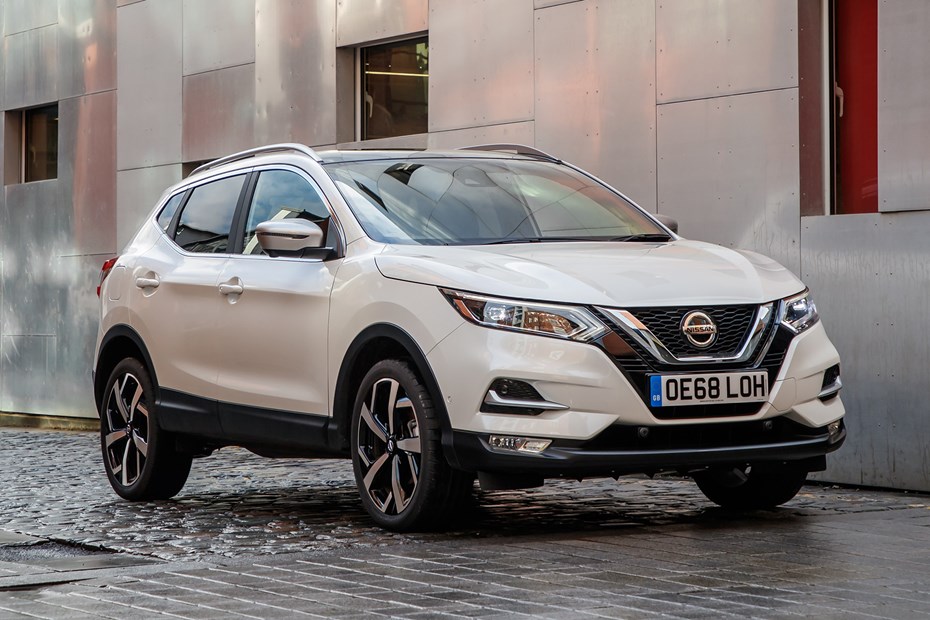
In 2019 Parkers ran a facelift Nissan Qashqai Mk2 with the 160hp 1.3 DiG-T engine and seven-speed automatic, in popular Tekna trim. You can find hundreds of similar examples for sale across the UK. With 11,000 miles covered during our long-term test, you can get a good idea of what the Qashqai is like to live with below.
Update 1: Welcome
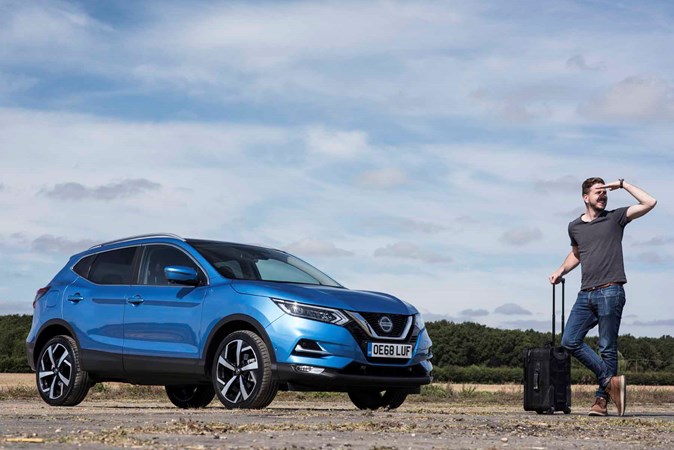
The Nissan Qashqai is incredibly popular in the UK, frequently found in top 10 bestselling lists, and it’s not hard to see why – it’s got the practicality of an SUV with the footprint of a small hatchback, and suits family life to a tee. Since it’s second gen launch in 2014, it has received a number of updates that have managed to keep it competitive over the last five years.
In 2017 it was given an extensive facelift, gaining a sharper exterior look and more premium-feeling interior styling and in 2018 had a new set of smoother and punchier engines added to it’s line up, but some still questioned it’s real world fuel figures and whether the Qashqai really deserved it’s popularity when compared against competitive rivals such as the Kia Sportage, Peugeot 3008 and SEAT Ateca.
Being an Aussie let loose in a new country I intend to put this car through the wringer. This is not just going to be a car for my daily commute, we are going places!
Nissan’s upgrades of the Qashqai’s petrol engine line-up in late 2018 replaced the 115hp 1.2-litre and 163hp 1.6-litre DIG-T petrol engines with a 1.3-litre DIG-T turbo petrol which is available in two power outputs – 140hp and 160hp. This is the same engine you’ll find under the bonnet of a Mercedes-Benz A 200 – which I’m sure is a key selling point in every dealership in the country.
Two diesel variants are available also, a 1.5-litre dCi with 115hp, which is the most economical, and new 1.7-litre with 150hp. The engines come paired with either a manual gearbox or if you opt for an auto, these 2017 engines make use of a newer seven-speed DCT (dual-clutch transmission).
True Blue
We got our Qashqai dressed up in the flamboyant Vivid Blue colour, which I jokingly assumed was a comment on my Australian heritage and thus resulted in my wife giving it the nickname ‘True Blue’. It is quite striking when you see it, but it’s worth noting that this colour comes with a £745 premium and although there are 10 other colour choices to choose from, unless you like the base spec Flame Red, you will be paying extra for any of the alternatives.
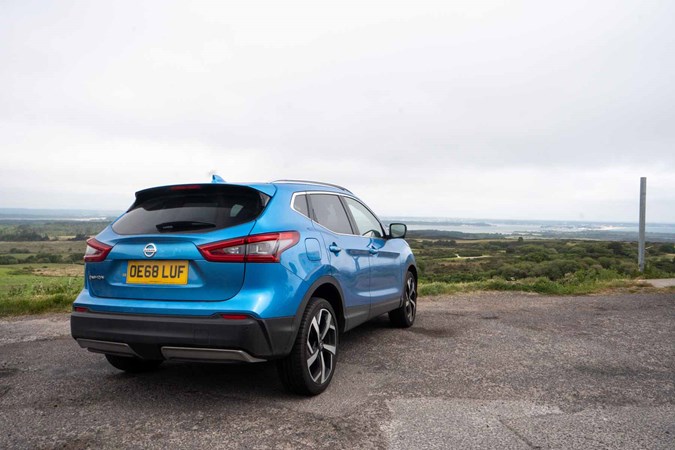
There are five grades of Qashqai you can purchase, starting with the base level Visia, then moving up with Acenta Premium, N-Connecta, Tekna, then the range topping Tekna+ which starts at £29,225.
Our Qashqai arrives in Tekna trim, which puts it at the top end of the range and gives us access to a lot of handy features including:
• Leather interior
• 19-inch diamond cut alloy wheels
• 7.0-inch touch screen with sat-nav, DAB, Apple CarPlay and Android Auto
• Dual-zone climate control
• LED automatic headlights
• Heated front seats
• Surround parking sensors with 360-degree around view monitor
• Eight Bose Speakers with 7.7-litre subwoofer
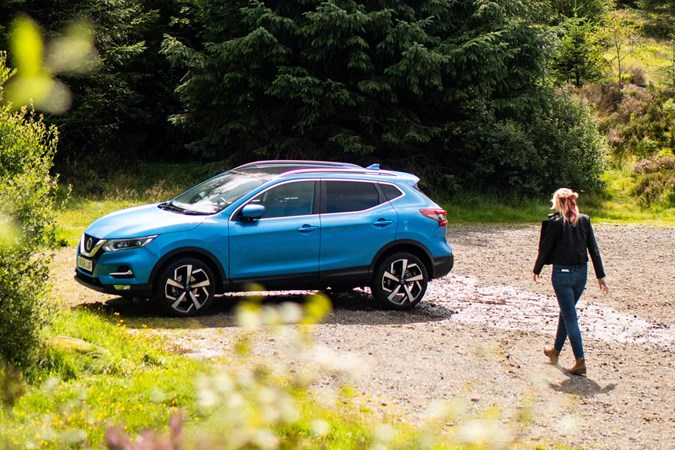
It also comes equipped with Nissan’s Safety Shield Plus and Smart Vision Pack which includes:
• Blind Spot Monitoring
• Rear Cross Traffic Alert
• Moving Object Detection
• Anti-dazzle rear view mirror
• Traffic sign recognition
• High beam assist
• Lane departure warning
• Intelligent emergency braking with pedestrian recognition
• Front and rear parking sensors
Besides the paint finish, the only other additional extra added to our Qashqai is the glass roof pack, which adds a panoramic glass roof for £450. This means the on road price for the car is a hefty £30,640. That is quite a lot of money for a small SUV and over £10K above the base starting price. But with the plethora of additional driver aids and creature comforts that come with this trim, you can at least see what you are getting for that price.
Update 2: Performance and handling
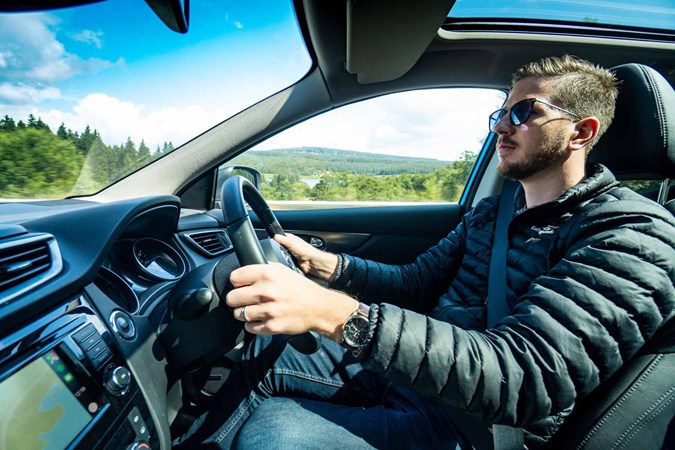
My first drive in the Qashqai consisted of a quick trip from the Parkers office to the local services on the highway to grab a bite to eat. I have to admit, from it’s rather ‘everyday’ exterior, I didn’t expect a lot from this family SUV that I had been given, but the engine definitely surprised me. It was quick, responsive and the acceleration wasn’t without excitement.
Putting my foot down to beat the traffic on the A1, I very quickly and smoothly hit the national speed limit (and some) without the transmission skipping a beat. This was noticeably more responsive than I had thought. Now don’t get me wrong, this isn’t sports car responsiveness, and the 270Nm of torque supplied by the engine wasn’t enough to thrust my head back into my seat, nor was the 0-62 mph time of 9.9 seconds anything to write home about, but for an everyday car, this wasn’t going to leave you worrying about nailing that gap on the highway when you need it to.
The ride is plush and any bump on the road is well ironed out by the suspension, which is McPherson strut up front and torsion beam on the rear, and riding on 19-inch alloy wheels. I have a favourite winding back road out the back of Stamford that I love to drive through and it is highly rutted and lumpy, and while the Qashqai tends to billow and roll between the bumps, it is never harsh – which admittedly is a characteristic of most SUVs, but well received none-the-less.
The cabin is fairly well insulated, however there is noticeable wind noise around the door mirrors and road and tyre noise from those wheels. This isn’t exceptional for this grade of vehicle and the easiest way to avoid it is to take advantage of that Bose speaker system – choose your favourite track/radio station, turn the volume up to 11 and all the road noise just fades into the background.
The transmission quickly showed its dark side once I got off the motorway and back into the industrial roads. I came up to a roundabout, slowed to a reasonable approaching speed, and upon noticing it was clear, put my foot down on the accelerator again only to find that I wasn’t awarded the same instant throttle response I had grown to expect from my initial experience. The hesitation of the dual-clutch transmission to drop into the required gear left me momently stranded, and when it did finally work out what it was asking it to do, it rammed the car into gear so hard that my bag of food on the passenger seat was viciously flung into the backrest. Granted this is common for DCTs but it is something to keep in mind when opting for the automatic – personally I would opt for a manual.
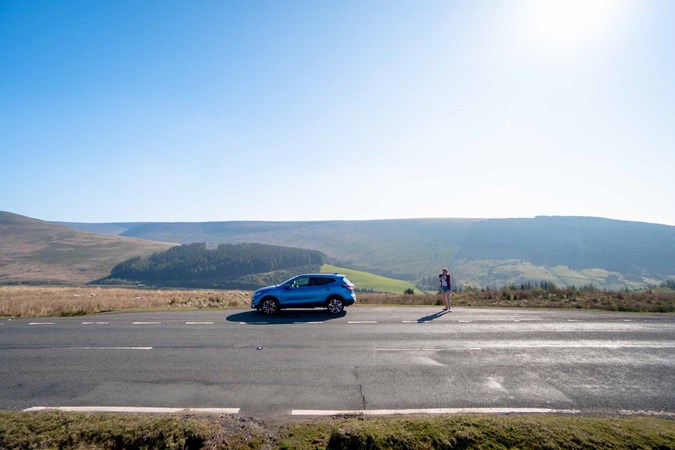
The steering in the Qashqai is electrically assisted and in its default form it feels very light and sharp, yet disconnected. The first thing I did when I got the chance was to change the steering to SPORT in the settings on the dash, which ever so slightly stiffened up the steering wheel and gave the impression of more feel – and I left it in sport for the rest of my time with the car.
Too smart for its own good?
The Tekna spec Qashqai comes with Nissan’s Safety Shield Plus and Smart Vision pack which offers helpful aids to stop you from running into something that you may be blind to at the time. Blind spot monitoring is great and after a while you learn to trust it as much as a head check to ensure you are safe changing lanes, the traffic sign recognition was bang on every time, the anti-dazzle rear view mirror did it’s job in the background without me even noticing it, and the high beam assist worked brilliantly, leaving me to simply worry about driving rather than flicking the high beams on and off at the sight of another car.
There are, however, some features that I just don’t need in my life. Lane departure warning is more annoying than helpful in everyday driving but mercifully can be turned off in the settings. The car would panic regularly if there was a parked car on the side of the road that it thought I would run into. Alarm bells would go off accompanied with flashing warning lights on the dash at the exact moment when I should be focused on making sure I have got my speed right to smoothly pull around a parked car while I let oncoming traffic go by first.
The parking sensors are great, and they surround the whole car giving me confidence I am not going to hit anything whenever I park, however you can’t turn them off when you’re just sitting still, so when I was driving down narrow country lanes with long grass, they would regularly go off, and if you had to sit and wait in a passing place as others go passed, they would just beep incessantly without any means of turning them off. The best I could do was turn down the volume to the low setting, which really, unless you’re hard of hearing, is plenty loud enough.
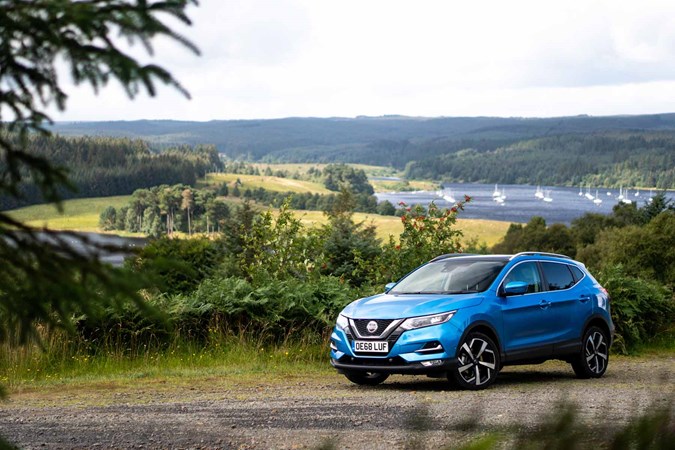
The idle stop/start function of the Qashqai works well, but is way too overactive. There were many times when I would come up to a give way sign slowly, put the foot on the brake for half a second to let a single car go by, only to find when I lift my foot back up and down on the accelerator again, the engine has decided to turn off. It is in this moment that I would start pumping the accelerator trying to get the car to register that I want it to go, but the car is so confused it takes a few seconds for it to register what I’m asking it to do. By this time more traffic is coming and I’m no longer sure if the gap is adequate to enter, but then the engine springs to life and the transmission thrusts you in to first gear with such force that you and your passengers are given whiplash as you dangerously bunny-hop into the intersection, waving apologetically to the people you’ve just cut off.
Now you can turn auto start/stop off, but you have to do it every time you restart that car, and it is genuinely a good feature to have when you’re sitting in the lights or bumper-to-bumper traffic, but it did make me wonder how the Qashqai can have a camera on the front of the car that can recognise a national speed limit sign at 70mph and know whether I’m on a dual carriage-way or single lane highway, but can’t tell when I’m at a stop sign or give way sign, or at a roundabout, or simply turning right and make the decision to turn the car off or not.
All these features serve a purpose and in that moment when you need them, you will be thankful for their intrusive nature, but it is a shame when it takes away from the enjoyment of simply driving a car.
Update 3: Comfort and interior
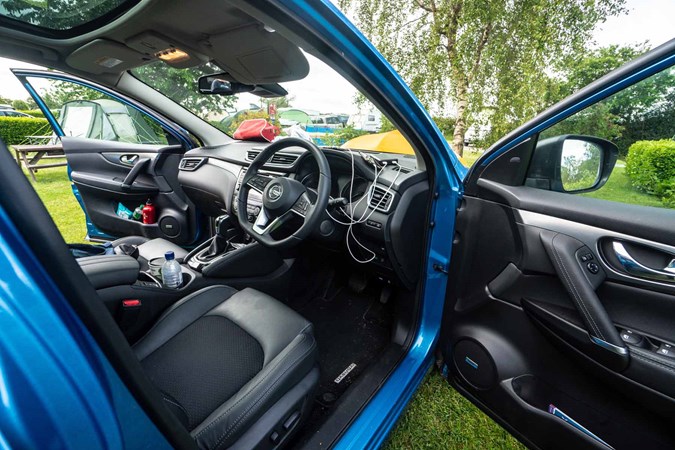
With plenty of ISOFIX points and smart wipeable surfaces all around the interior, there is no doubting that the Qashqai is firmly targeting the family market. I however do not have a family, but I am accident prone, and when the lid of my iced latte from Starbucks, which wasn’t as load-bearing as I thought, decided to detach itself from the receptacle section of my drink, I was thankful for the Qashqai’s interior durability. A quick wipe up and it was as if it never happened.
The touch points in the cabin are very plush in this Tekna trim, with soft touch leather and cushy rubber making up the bulk of the interior. You are hard pressed to find many rough plastic touch points anywhere. With fully electric adjustable seats for the driver, there was no issue finding the most comfortable seating position, and we have to mention the heated seats or those cold winter mornings and the leather clad steering wheel. When you put this all together, it definitely made the car feel worth it’s premium price tag.
However these plush points are let down by some very dated and plastic switches and dials that, whilst functional, really cheapen the experience. This was really obvious for with the heated seat switches that were very plasticy and used a simple two setting switch function that contradicted their intended luxury.
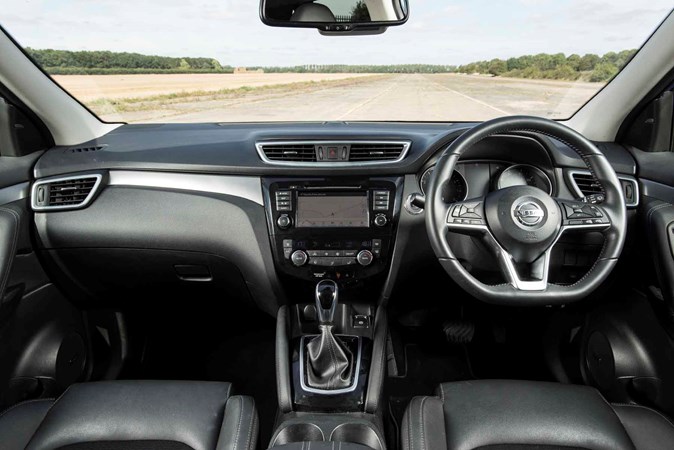
However the buttons and switches are very functional and whilst there are a lot of them, you quickly find your way around. The cruise control is intuitive to operate and the controls are well positioned on the steering wheel.
The 7.0-ich touchscreen that we had is very dated. The menu system is very confusing and often requires you to go through three or four different screens before you find what you’re looking for. The simple process of selecting a music source and choosing a radio station took a fair amount time to become familiar. Thank goodness that there is Apple CarPlay installed and I could simple plug my phone in and have all the familiar apps ready to go. I only ended up using the Nissan’s in built navigation system once, and admittedly it worked fine once you figured out the formula for how the car wants you to input the address – you do find yourself missing the power of Google Maps to decipher the address you are putting in. But if you forgot your phone cable, it’s not the worst alternative.
There is only one USB slot in the car, located in the centre armrest, which is how you connect to CarPlay or Android Auto. My wife and I found this frustrating as we could only charge one phone at a time, and basically it came down to who had the location we were going to on their maps, or whose music we would listen to. A second charging USB wouldn’t hurt.
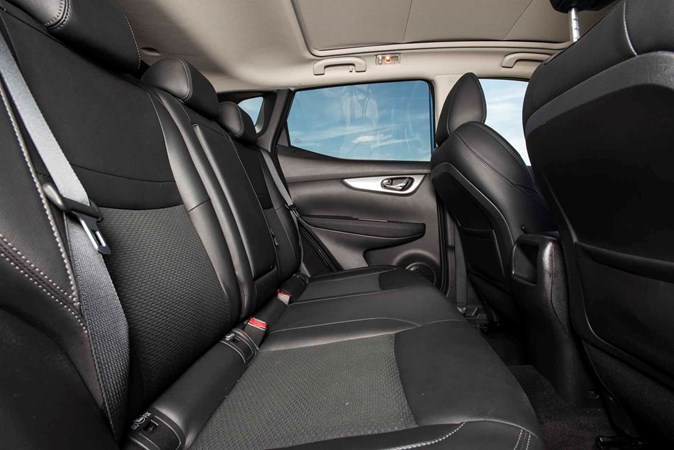
After six months and 13,000 miles in the Qashqai, I was really impressed with the interior quality of the car. There were no rattles coming from anywhere in the dash, and when I turned the bass of the subwoofer all the way up and blasted my favourite bass-filled song – Sail by Awolnation – to really test whether anything would vibrate, the only part of the car I could really tell was rattling was the seat-belt height adjustment points in the B-pillars.
It’s worth noting that while the panoramic glass sunroof brought the outside in and made the cabin feel light and airy, it did at times make it difficult to see the the 7.0-inch touchscreen due to glare, which was most problematic when using reverse cameras or trying to discern which direction the sat-nav wanted you to go.
Update 4: Practicality
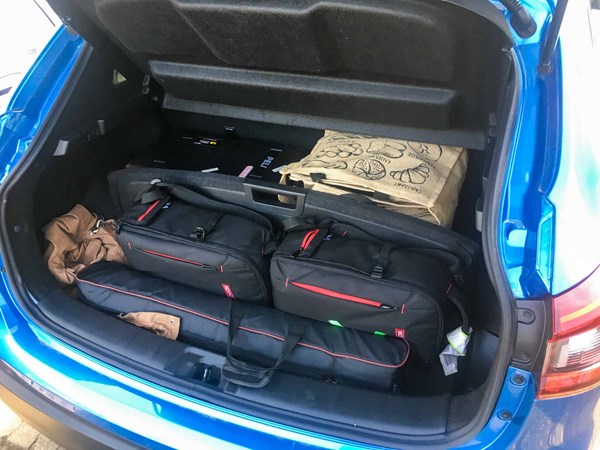
The Qashqai’s practicality has been its best asset for me over the last six months. My work requires me to carry a number of Pelican cases and camera bags and carting these around in the boot was made even easier with the ability to configure the boot into separate sections ensuring nothing rolled around in the back – nothing worse than hearing a Pelican case slide from one side of the boot to the other every time you go round a corner.
Nissan claims that there is 16 different ways you can arrange the boot space. This is clearly a stretch but it is technically true. Unfortunately I rarely used anything other than a flat or divided space as there is nowhere to store the large boot dividers when they aren’t in use. I imagine these will either end up living in your garage for long periods of time if you decide to remove them or you will simply never take them out of the boot and leave it in flat configuration all the time as happened for me.
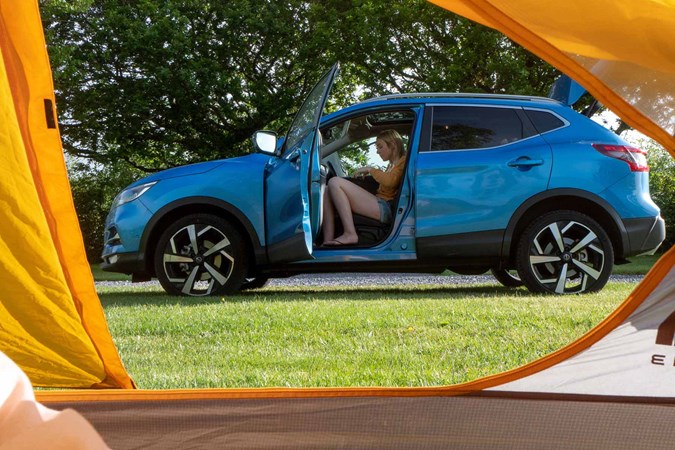
My wife and I are avid campers and the 403 litres of luggage space was more than enough to fit all our camping gear and hiking bags. We took the Qashqai out to Snowdonia, Cornwall, Pembrokeshire coast and Kielder Forest and every time, without fail, the car would become filled with bottles and wrappers and chips, but everything found a home in one of the many cupholders or door pockets that were spread generously throughout the cabin.
Update 5: City driving
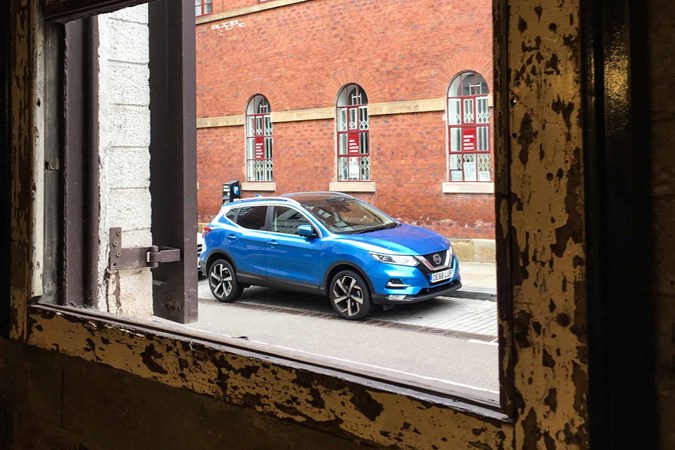
Ok, it’s 7am on Sunday morning and we have nothing to do that day. I’m sitting in my home in Stamford wondering what we could fill our time with. Then my wife brings up a cafe on Instagram in Chelsea that she wants to visit. There’s no doubting it – London’s calling.
So we jump in the Qashqai and drive the 97 miles down the A1 for a coffee.
The Qashqai takes to city driving like a duck to water. Its got a small footprint so you can trust it to squeeze between all those parked cars down the side road, and with just enough zest under the bonnet to confidently push into that gap when you realise that you should be turning left and you’re in the far right lane.
When looking for a place to leave your car for the day you still go round the sharp corners of those pesky multi-storey parking garages on a hope and a prayer that you won’t scrape the side by taking too tight an angle, but without fail every time it makes it easily.
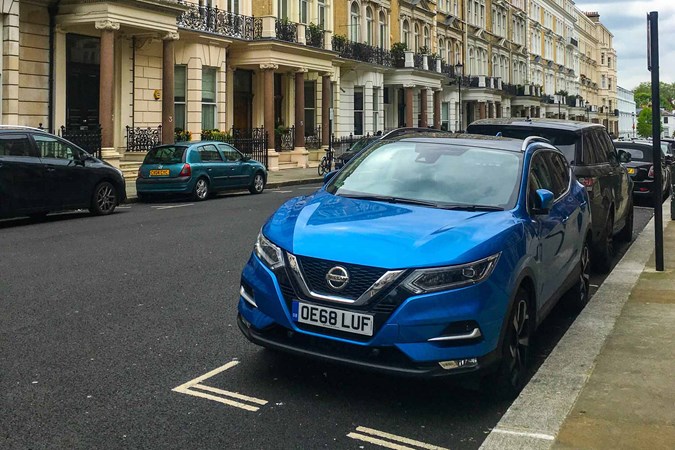
When you do find the perfect spot, between that Land Rover Evoque and Porsche Macan, you can confidently reverse in to the space with the visual aids of a reverse camera and 360-degree top view camera. This is primitive and a bit lacking in resolution, but it works, and honestly, after a while I’ve started wondering how I managed without it in the past.
Seeing Double
When we come back to the parking garage the popularity of the Qashqai becomes hilariously obvious when my wife walks up to the Vivid Blue Nissan Qashqai parked near ours, only to discover that it is the completely wrong car. This is the painful truth of this car in the UK – you are not going to stand out in a Qashqai.
These cars are part of the road furniture and wherever you go, there will always be another not far away. Their appeal isn’t baffling though. The Qashqai really isn’t phased by whatever situation I throw it in.
Update 6: Verdict
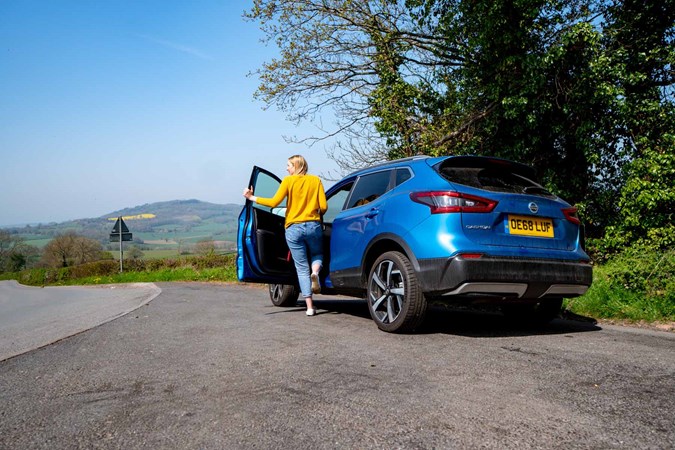
So my time with Qashqai has come to an end, and what a time we have had together. In our six months in the UK together we have driven over 11,000 miles from a spontaneous road trip up the A1 to Edinburgh, to the narrow country lanes of the Pembrokeshire coast, I am really sad to hand back the keys.
The big question I had at the start of this journey was whether or not the Qashqai could possible achieve it’s claimed 49.4mpg. I only filled up with 99 or 97 octane petrol but alas those numbers were still too good to be true. Only once did I achieve a 40mpg between filling up, and this was over two days of driving doing a lot of country/highway miles along the Jurassic Coast and back to Stamford. Overall, in the six months I had True Blue, I only averaged 34.0mpg, so keep this in mind when you view those claimed figures in the brochure.
Sure there are cars that will be zippier, or more comfortable, or less noisey, and you still have the issues I’ve mentioned in the past of a touchy transmission and frustrating start/stop function, but when you put all that aside, I really can’t fault this cars chameleon-like ability to simply blend in to any environment it’s placed in.



.jpg)
.jpg)
.jpg)
.jpg)
.jpg)
.jpg)
.jpg)
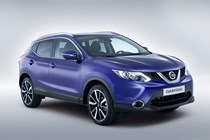
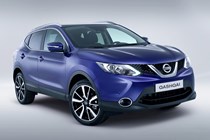
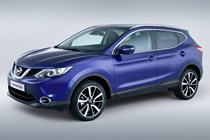
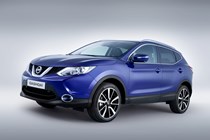


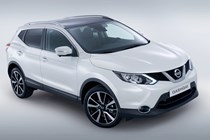
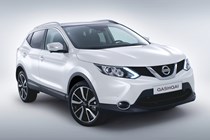
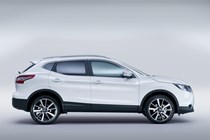
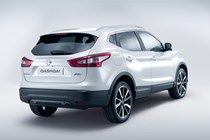
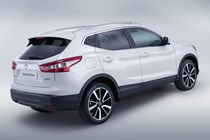
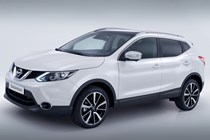
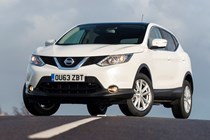
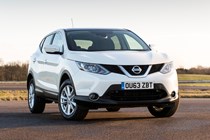
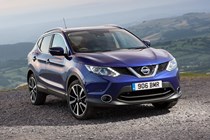
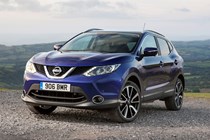
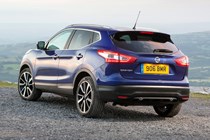
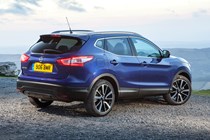
.jpg)
.jpg)
.jpg)
.jpg)
.jpg)
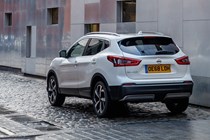
.jpg)
.jpg)
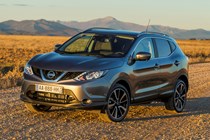
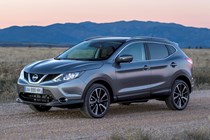
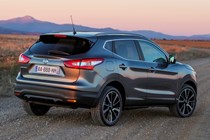
.jpg)
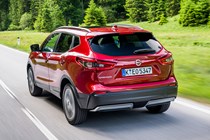
.jpg)
.jpg)
.jpg)
.jpg)
.jpg)
.jpg)
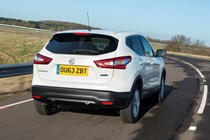
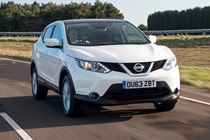
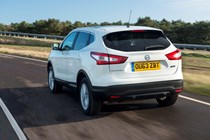
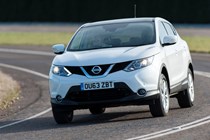
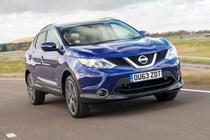
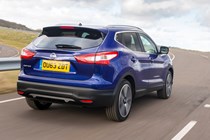
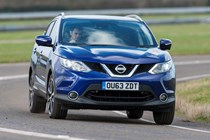
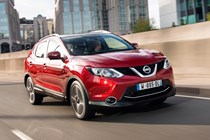
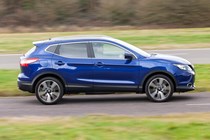
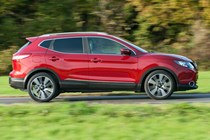
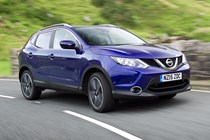
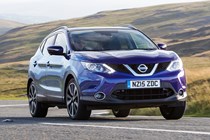
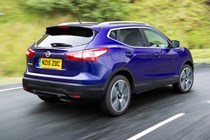
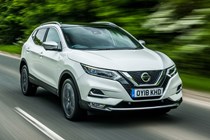
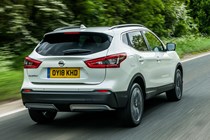
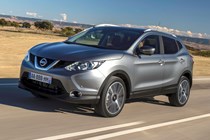
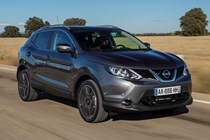
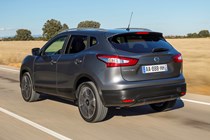
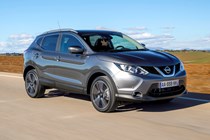
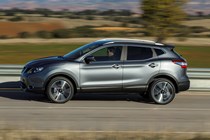
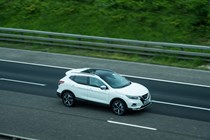
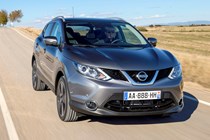
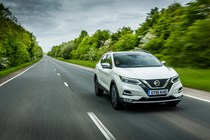
.jpg)
.jpg)
.jpg)
.jpg)
.jpg)
.jpg)
.jpg)
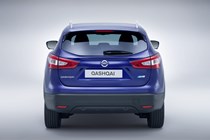
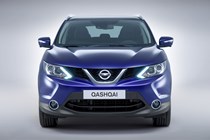
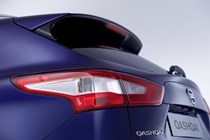
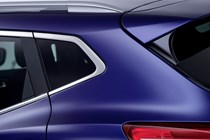
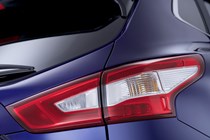

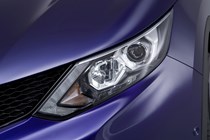
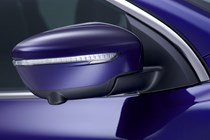
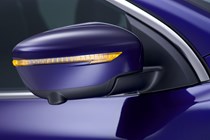

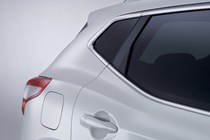
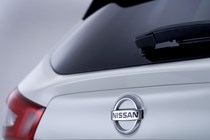
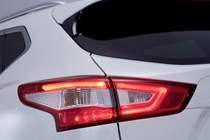

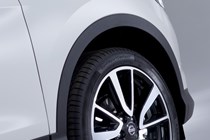
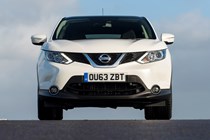
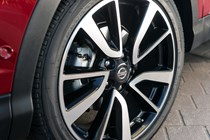
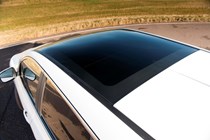
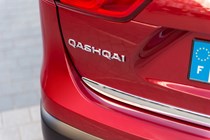
.jpg)
.jpg)
.jpg)
.jpg)
.jpg)
.jpg)
.jpg)
.jpg)
.jpg)
.jpg)
.jpg)
.jpg)
.jpg)
.jpg)
.jpg)
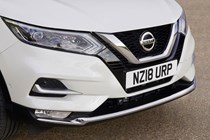
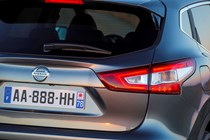
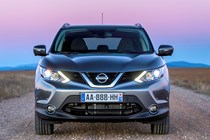

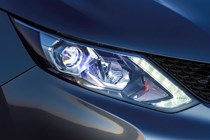
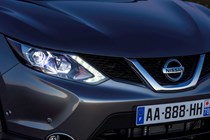
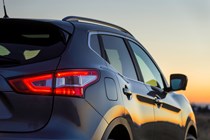
.jpg)
.jpg)
.jpg)
.jpg)
.jpg)
.jpg)
.jpg)
.jpg)
.jpg)
.jpg)
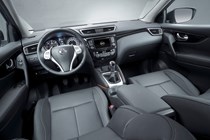
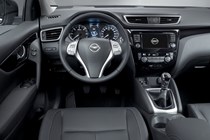
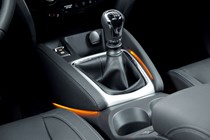
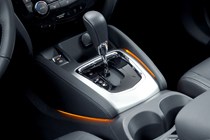

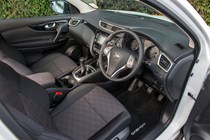
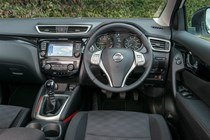
.jpg)
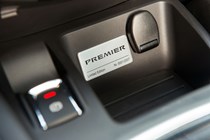
.jpg)
.jpg)
.jpg)
.jpg)
.jpg)
.jpg)
.jpg)
.jpg)
.jpg)
.jpg)
.jpg)
.jpg)
.jpg)
.jpg)
.jpg)
.jpg)
.jpg)
.jpg)
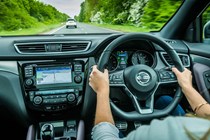
.jpg)
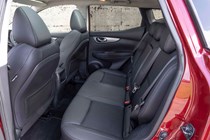
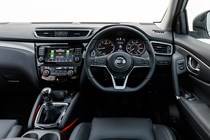

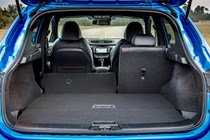
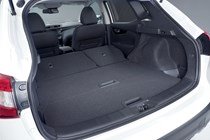
.jpg)
.jpg)
.jpg)
.jpg)
.jpg)
.jpg)
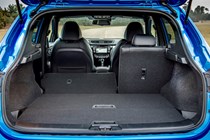
.jpg)
.jpg)
.jpg)
.jpg)
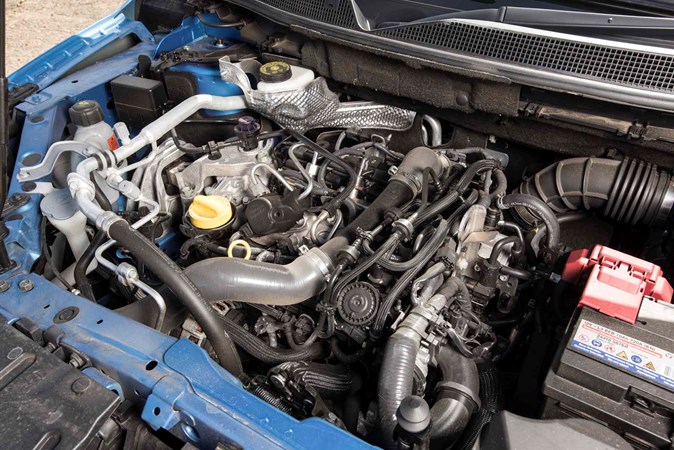



.jpg?quality=50)
.jpg?quality=50)
.jpg?quality=50)
.jpg?quality=50)
.jpg?quality=50)
.jpg?quality=50)
.jpg?quality=50)


















.jpg?quality=50)
.jpg?quality=50)
.jpg?quality=50)
.jpg?quality=50)
.jpg?quality=50)

.jpg?quality=50)
.jpg?quality=50)



.jpg?quality=50)

.jpg?quality=50)
.jpg?quality=50)
.jpg?quality=50)
.jpg?quality=50)
.jpg?quality=50)
.jpg?quality=50)























.jpg?quality=50)
.jpg?quality=50)
.jpg?quality=50)
.jpg?quality=50)
.jpg?quality=50)
.jpg?quality=50)
.jpg?quality=50)



















.jpg?quality=50)
.jpg?quality=50)
.jpg?quality=50)
.jpg?quality=50)
.jpg?quality=50)
.jpg?quality=50)
.jpg?quality=50)
.jpg?quality=50)
.jpg?quality=50)
.jpg?quality=50)
.jpg?quality=50)
.jpg?quality=50)
.jpg?quality=50)
.jpg?quality=50)
.jpg?quality=50)







.jpg?quality=50)
.jpg?quality=50)
.jpg?quality=50)
.jpg?quality=50)
.jpg?quality=50)
.jpg?quality=50)
.jpg?quality=50)
.jpg?quality=50)
.jpg?quality=50)
.jpg?quality=50)







.jpg?quality=50)

.jpg?quality=50)
.jpg?quality=50)
.jpg?quality=50)
.jpg?quality=50)
.jpg?quality=50)
.jpg?quality=50)
.jpg?quality=50)
.jpg?quality=50)
.jpg?quality=50)
.jpg?quality=50)
.jpg?quality=50)
.jpg?quality=50)
.jpg?quality=50)
.jpg?quality=50)
.jpg?quality=50)
.jpg?quality=50)
.jpg?quality=50)
.jpg?quality=50)

.jpg?quality=50)





.jpg?quality=50)
.jpg?quality=50)
.jpg?quality=50)
.jpg?quality=50)
.jpg?quality=50)
.jpg?quality=50)

.jpg?quality=50)
.jpg?quality=50)
.jpg?quality=50)
.jpg?quality=50)